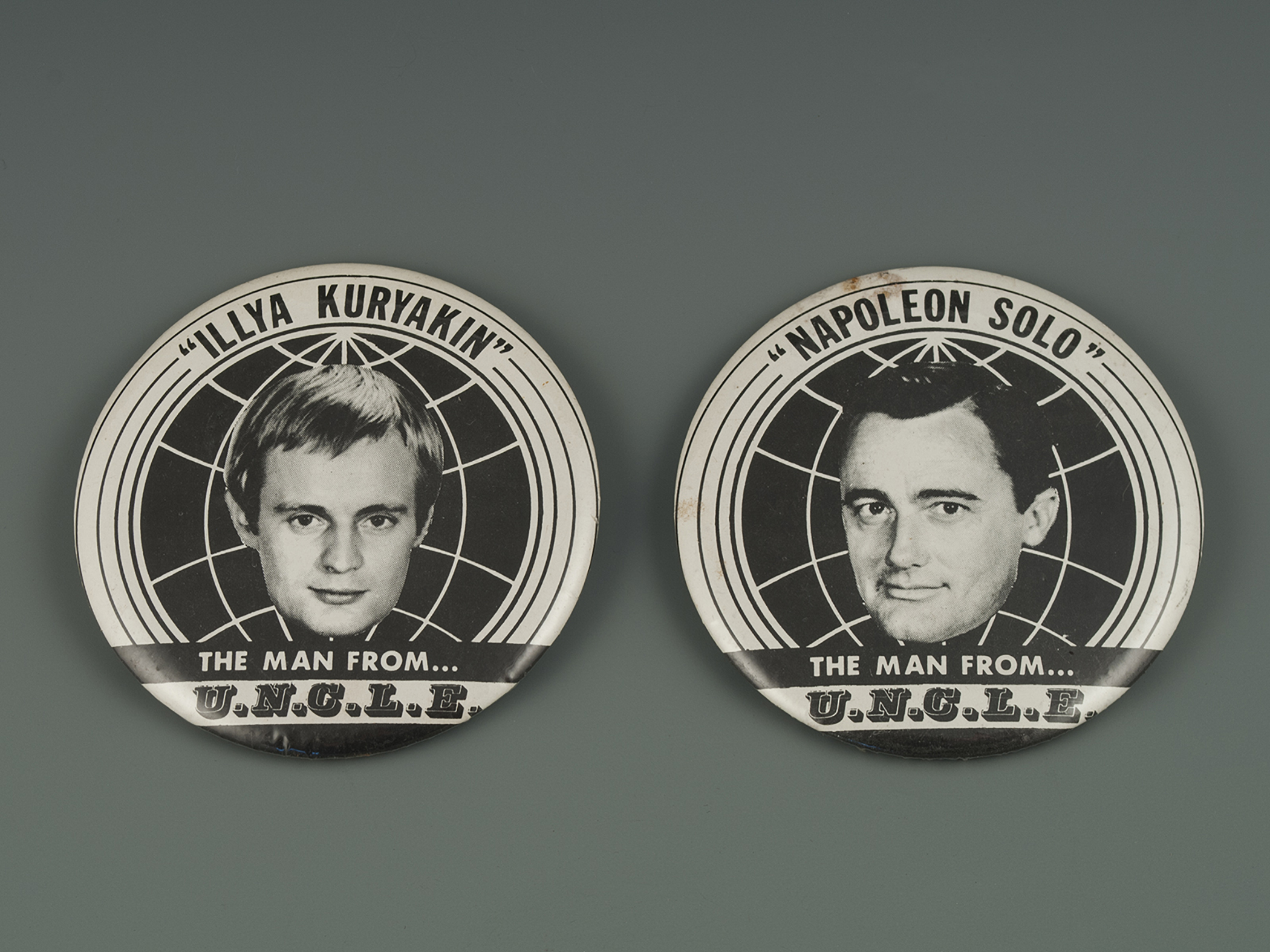Man From U.N.C.L.E. Pins
Plainview, 1967

During my final year of junior high school on Long Island, my friend Jeffrey and I were obsessed with The Man from U.N.C.L.E., a television show inspired by the James Bond films but lacking the urbane sophistication of, say, The Saint or I Spy.
I was 13, unhappy, and deeply impressionable. My friend and I amassed a collection of U.N.C.L.E.-inspired guns and other toy props. But Jeffrey went so far as to write a hopeful, full-length screenplay for an episode of the show—a flight of genius so far beyond my capacities that it forever separated us intellectually. (He later became a well-known film producer, and wrote and directed several films of his own.)
My own skill was in petty theft, and I was able to pilfer a roll of magnesium tape from our high school lab. Mg tape was often used as a prop on The Man from U.N.C.L.E.; hidden on the person of agent Napoleon Solo or Illya Kuryakin, it flared superhot when ignited, melting locks and doorknobs, and allowing quick entries or escapes.
What I personally needed to escape from was my adolescence. I was a weakling and a coward. My useless tape and plastic model of Solo’s famous gun (so novel and realistic that MGM was investigated under suspicion of producing genuine firearms) allowed me to hide behind the role of a self-assured superspy—when I wasn’t being chased home after school.
Even today, having evolved into the antipode of my boyhood self, remnants of that secret agent alter-ego remain. I’ll pack my electric bass into my car, wondering if my neighbors suspect anything. I’ll travel away on a writing assignment, elusive about my destination. I’ll pretend I am who I am not, not quite certain I want to be who I actually am.
